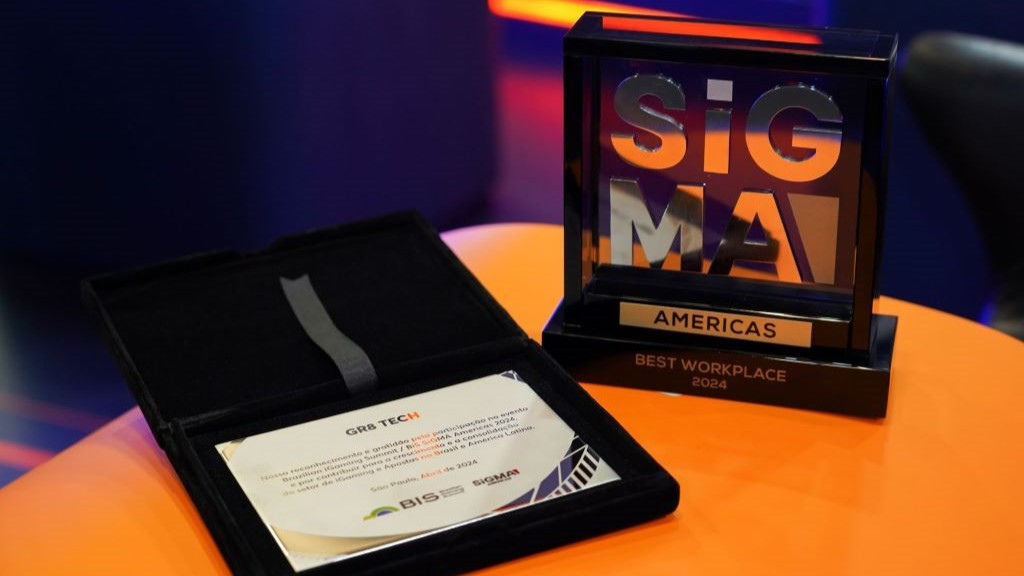The rapid development of the iGaming sphere has become possible due to the advancement of the software used by online gaming. To provide users with exciting and high-quality products, the industry requires a deep understanding of cutting-edge technologies, concepts and approaches such as High Load, Big Data, High Availability, High Scalability, Realtime and Low Latency. Therefore, iGaming software developers are driving the global development of the industry and this is precisely what PIN-UP.TECH are doing.
The PIN-UP.TECH segment is part of the PIN-UP Global ecosystem and consists of IT companies specialising in software development for all their members. Among the achievements of PIN-UP.TECH are unique technological solutions which enable partners to maintain their leading position and provide players with a high quality service. Over 500 specialists from different countries are involved in the technical direction of PIN-UP, who ensure the stability of iGaming platforms, CRM, anti-fraud tools, affiliate systems and much more. Among the leaders of this professional team is Volodymyr Todurov, Chief Analytics Officer, who shared with SiGMA News comments about their unique work experience.
Could you tell us more about the ML/AI model and how it works for you?
AI-based decision models meticulously scrutinise numerous parameters associated with each transaction, encompassing variables such as the frequency of bets, their sizes, the selected events, as well as their history. These parameters undergo analysis within the model, where those exhibiting the highest predictive efficacy are identified and incorporated into the forecasting process.
IWe have employed machine learning with a primary focus on the extreme gradient boosting model, renowned for its efficacy with structured data. The crux of this approach lies in constructing an ensemble of models that iteratively refine each other, thereby bolstering the accuracy of the forecasts. The model is fed with an extensive betting history as input and yields a probability in the range of 0..1, indicating the likelihood of user involvement in fraudulent activities.
What are the advantages of an AI-based anti-fraud model compared to a classic one?
When we are confronted with vast quantities of data, the utility of ML/AI models becomes evident. They offer a heightened capacity to generalise information and discern patterns in customer behavior that elude methods like manual transaction analysis or the application of linear rules.
AI serves as an additional toolkit for the operations team, streamlining processes by reducing error rates and decision-making times for individual cases, while also uncovering fresh insights into our clientele. In certain respects, AI enriches our expertise and broadens our perspectives by employing a slightly divergent approach to decision-making. Many tasks can now be delegated to AI with autonomy.
Consequently, AI facilitates the expansion of business volumes without a proportional increase in the risk-management team, streamlining daily operations by eliminating tedious routines and affording the opportunity to delve deeper into the analysis of other processes.
In your opinion, how can AI-based anti-fraud tools develop and what problems can they solve in the future?
Within the team, we outlined how we see the development of anti-fraud tools using ML and AI, and made our plans for the further implementation of these technologies. Our next step involves crafting a decision-making system using cutting-edge deep neural networks and generative artificial intelligence. By slashing decision times, we're getting closer to our goal of ramping up accuracy and speed in spotting fraudulent client behaviour.
This approach, with its knack for learning and adapting, dives deep into each client's history, employing various scenarios to pinpoint specific groups, including fraudsters. These new tools, once honed to a tee, are a real find for the anti-fraud team's daily grind.
For big businesses, they're like a trusty sidekick for retrospective checks, ensuring we've correctly labeled all clients as either "good" or "bad," so managers may not worry, knowing they haven't missed any troublemakers. And for small businesses, they're a game-changer, eliminating the need for a hefty analyst team right off the bat. Let AI take the wheel on manual tasks, and watch the anti-fraud department's efficiency skyrocket.
What are some ways to further improve the efficiency of anti-fouling processes? Tell us briefly about your approaches.
Each team, taking into account the direction of the business and the number of specialists, has its own secrets of increasing efficiency and intelligently solving complex problems. For us, this is definitely procedures automatisation based on a DDDM approach, which allows us to think out of the box. We evaluate all workflows seeking optimisation points. Our goal is to find the manual procedure, so called “monkey job”, to automate it.
The problem could be solved in different ways: I will give a couple of examples from our operations within the last few years. Previously, anti-fraud analysts needed to export a few csv-tables to merge them in order to understand if there are certain behavioural changes on player accounts based on financial and gambling history. We realised that we will save at least 10-15 minutes of manual operations per each case just creating a new default real-time dashboard with pivot tables and charts needed.
Another case is reviewing current operations. Let’s take a look at the withdrawal confirmation process. Based on a DDDM approach we analyse the weight of evidence on each reason leading to manual withdrawal confirmation. Some of the reasons were created as a reaction to certain fraud cases to keep an eye on potential returning fraud. However, business expanded and more new players from new GEOs led to decrease the performance of the rule. So, we adopted the rule and made a 15% uplift in the team’s productivity in terms of their workload. The main point here is to run continuous analysis on workflow operations based on load and productivity measurements to find the optimisations combining management and automatisation.
What processes does a business need to set up to integrate the DDDM model, how long can it take, and how fast does it generate revenue?
The main point regarding DDDM is the mindset. Senior managers must deny all arguments based on feelings, hopes and “expertise”. I mean, this kind of approach should be used only for some exceptions when you have no data to calculate your decision. Or when the problem is not worth calculating efforts. Every time you want to make changes on your product ask the team about numbers.
The very common mistake is so-called survivorship bias. Pay attention that you make conclusions using end-to-end analysis to relevant scope of entities. Based on practice, managers forget to make helicopter views on the issue pretty often. I will make an example within anti-fraud operations. A manager came with retrospective fraud activity analysis based on welcome bonus abuse within the last 4 months. 83% of users had the same patterns to create an alerting scoring trigger: first deposit over $13, using prepaid bank card, IP analysis mismatch (probably proxies or VPN). Looks pretty good, yes?
However, I asked to make calculations if there is still a good efficiency if we will extrapolate this trigger to whole new users. Scoring models showed 5% efficiency. So, some combination of attributes could perfectly describe a group of fraud users and still be common for a bigger segment of good users. By the way, we added some gamestyle patterns to those welcome bonus hunters triggers to segregate from good players and keep the trigger in production.
Using DDDM will bring value from Day 1. You will avoid mistakes and increase productivity. The main point is to ask the team to show their number as the main argument on the business decision made.
Volodymyr’s short bio:
Volodymyr Todurov has eight years of experience in gambling, having held the positions of risk manager, and head of antifraud & analytics. He currently holds the position of chief analytics officer at PIN-UP Global. He is an expert in risk management operations of sportsbook, casino, affiliate programmes, marketing, payment systems. Volodymyr specialises in data-driven decision-making approach, economic modeling, and forecasting.
We're continuing our conversations with the experts at PIN-UP Global, so stay tuned to SiGMA News for more on the current engines of the iGaming sphere.
Upcoming SiGMA event: SiGMA Asia 2024, 2 – 5 June. Find all the details .






















